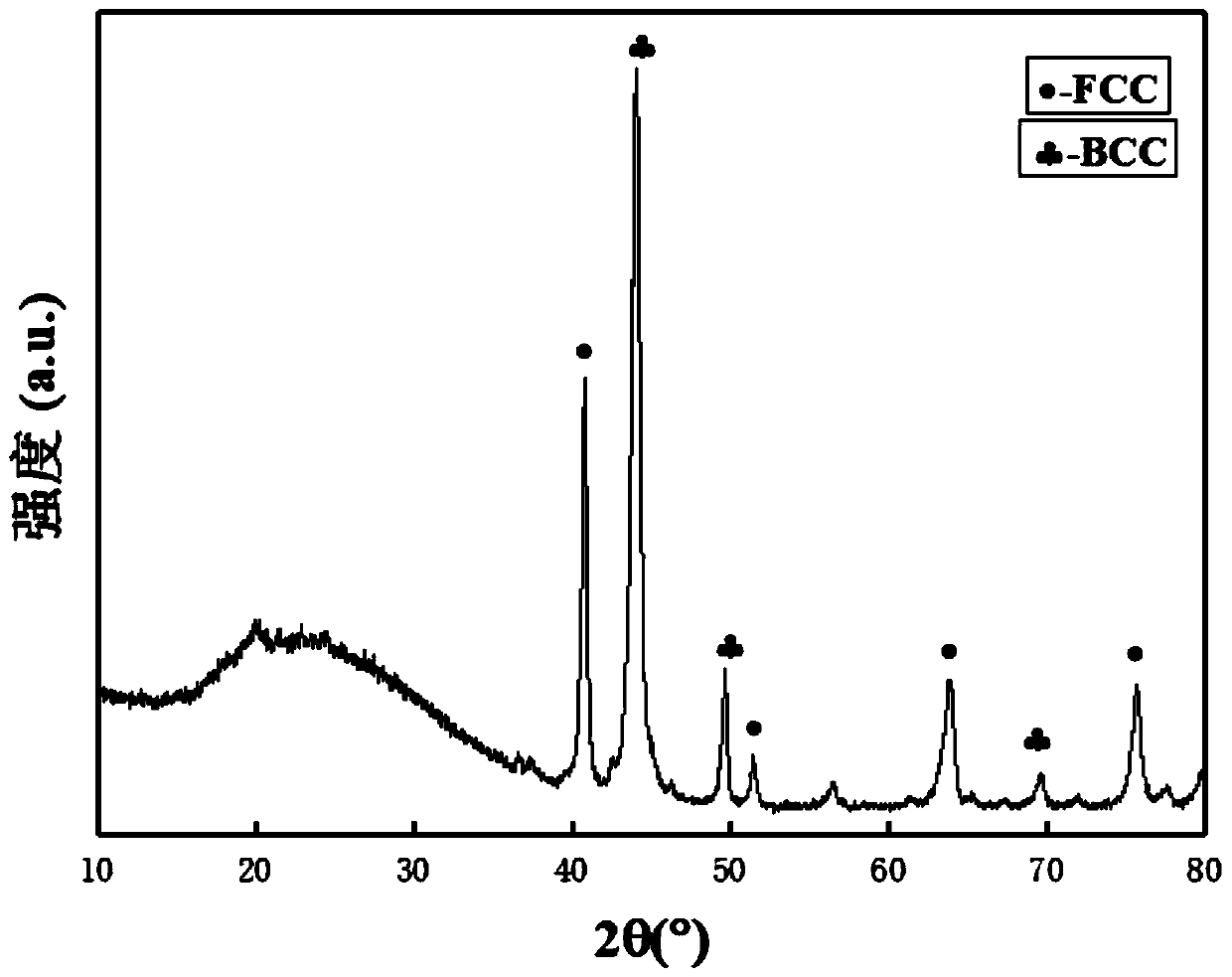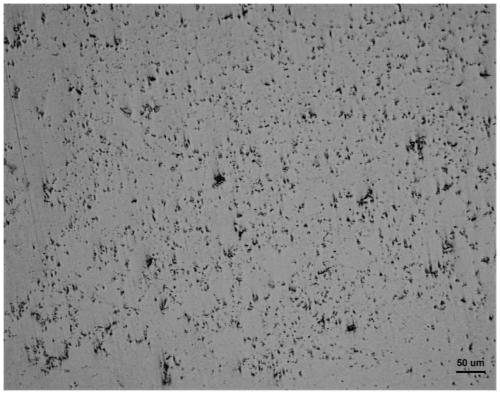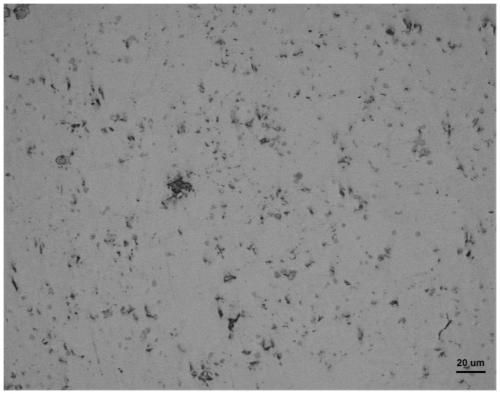FeCrVTiMn high-entropy alloy and method for carrying out laser additive manufacturing by adopting same
A high-entropy alloy, laser scanning technology, applied in the field of alloy powder
- Summary
- Abstract
- Description
- Claims
- Application Information
AI Technical Summary
Problems solved by technology
Method used
Image
Examples
Embodiment 1
[0060] First, the ingredients are prepared according to the following proportions, including 21.4% iron, 19.9% chromium, 19% vanadium, 18.7% titanium and 21.0% manganese in weight percentage.
[0061] Add the prepared metal iron, metal chromium, metal vanadium, metal titanium, and metal manganese into the intermediate frequency induction furnace, and heat it to melt it. The temperature in the frequency induction furnace is controlled at 1520°C. After the ingredients are adjusted to pass before the furnace, it is released from the furnace, and the temperature of the furnace is 1460°C. The alloy melt is atomized to prepare alloy powder, the atomization medium is argon, and the atomization pressure is 4MPa. The alloy powder is dried with a far-infrared dryer, and the drying temperature is 210°C. Then, the powder with a particle size ranging from 100 to 350 meshes is sifted out by a powder sieving machine as the finished powder.
[0062] After the above-mentioned finished powd...
Embodiment 2
[0067] First, the ingredients are prepared according to the following proportions, including 20.0% iron, 19.5% chromium, 18.5% vanadium, 19.0% titanium and 23.0% manganese in weight percentage.
[0068] Add the prepared metal iron, metal chromium, metal vanadium, metal titanium, and metal manganese into the intermediate frequency induction furnace, and heat it to melt with electricity. The temperature in the frequency induction furnace is controlled at 1520°C. After the ingredients are adjusted to pass before the furnace, it is released from the furnace, and the temperature of the furnace is 1460°C. The alloy melt is atomized to prepare alloy powder, the atomization medium is argon, and the atomization pressure is 4MPa. The alloy powder is dried with a far-infrared dryer, and the drying temperature is 210°C. Then, the powder with a particle size ranging from 100 to 350 meshes is sifted out by a powder sieving machine as the finished powder.
[0069] After the above-mentioned...
Embodiment 3
[0071] First, the ingredients are prepared according to the following proportions, including 22.5% iron, 20.5% chromium, 19% vanadium, 18.0% titanium and 20.0% manganese in weight percentage.
[0072] Add the prepared metal iron, metal chromium, metal vanadium, metal titanium, and metal manganese into the intermediate frequency induction furnace, and heat it to melt with electricity. The temperature in the frequency induction furnace is controlled at 1520°C. After the ingredients are adjusted to pass before the furnace, it is released from the furnace, and the temperature of the furnace is 1460°C. The alloy melt is atomized to prepare alloy powder, the atomization medium is argon, and the atomization pressure is 4MPa. The alloy powder is dried with a far-infrared dryer, and the drying temperature is 210°C. Then, the powder with a particle size ranging from 100 to 350 meshes is sifted out by a powder sieving machine as the finished powder.
[0073] After the above-mentioned f...
PUM
| Property | Measurement | Unit |
|---|---|---|
| Mechanical strength | aaaaa | aaaaa |
Abstract
Description
Claims
Application Information
 Login to View More
Login to View More - R&D
- Intellectual Property
- Life Sciences
- Materials
- Tech Scout
- Unparalleled Data Quality
- Higher Quality Content
- 60% Fewer Hallucinations
Browse by: Latest US Patents, China's latest patents, Technical Efficacy Thesaurus, Application Domain, Technology Topic, Popular Technical Reports.
© 2025 PatSnap. All rights reserved.Legal|Privacy policy|Modern Slavery Act Transparency Statement|Sitemap|About US| Contact US: help@patsnap.com



